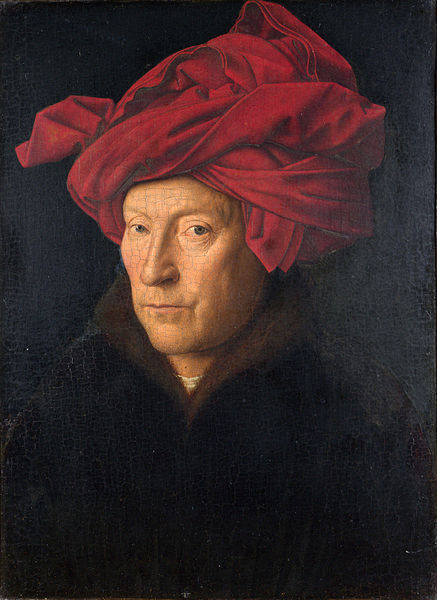Jan Van Eyck
Arnolfini Portrait
$480.00
Jan Van Eyck
Jan Van Eyck (1390-1441)
Jan van Eyck (before c. 1390 – 9 July 1441) was an Early Netherlandish painter active in Bruges. He is one of the founders of Early Netherlandish painting and one of the most significant representatives of Early Northern Renaissance art. The few surviving records of his early life indicate that he was born around 1380–1390, most likely in Maaseik. He took employment in the Hague around 1422, when he was already a master painter with workshop assistants, and employed as painter and valet de chambre with John III the Pitiless, ruler of Holland and Hainaut. He was then employed in Lille as court painter to Philip the Good, Duke of Burgundy after John's death in 1425, until he moved to Bruges in 1429 where he lived until his death. He was highly regarded by Philip and undertook a number of diplomatic visits abroad, including to Lisbon in 1428 to explore the possibility of a marriage contract between the duke and Isabella of Portugal.
Jan van Eyck died young, on 9 July 1441, in Bruges. He was buried in the graveyard of the Church of St Donatian. As a mark of respect, Philip made a one-off payment to Jan's widow Margaret, to a value equal to the artist's annual salary. He left behind many unfinished works to be completed by his workshop journeymen. After his death, Lambert van Eyck ran the workshop, as Jan's reputation and stature steadily grew. Early in 1442 Lambert had the body exhumed and placed inside St. Donatian's Cathedral.
In 1449 he was mentioned by the Italian humanist and antiquarian Ciriaco de' Pizzicolli as a painter of note and ability, and was recorded by Bartolomeo Facio in 1456.

About 20 surviving paintings are confidently attributed to him, as well as the Ghent Altarpiece and the illuminated miniatures of the Turin-Milan Hours, all dated between 1432 and 1439. Ten are dated and signed with a variation of his motto ALS IK KAN (As I (Eyck) can), a pun on his name, which he typically painted in Greek characters.
Van Eyck painted both secular and religious subject matter, including altarpieces, single-panel religious figures and commissioned portraits. His work includes single panels, diptychs, triptychs, and polyptych panels. He was well paid by Philip, who sought that the painter was secure financially and had artistic freedom so that he could paint "whenever he pleased". Van Eyck's work comes from the International Gothic style, but he soon eclipsed it, in part through a greater emphasis on naturalism and realism. He achieved a new level of virtuosity through his developments in the use of oil paint. He was highly influential, and his techniques and style were adopted and refined by the Early Netherlandish painters.
In the earliest significant source on van Eyck, a 1454 biography in Genoese humanist Bartolomeo Facio's De viris illustribus, Jan van Eyck is named "the leading painter" of his day. Facio places him among the best artists of the early 15th century, along with Rogier van der Weyden, Gentile da Fabriano, and Pisanello. It is particularly interesting that Facio shows as much enthusiasm for Netherlandish painters as he does for Italian painters. This text sheds light on aspects of Jan van Eyck's production now lost, citing a bathing scene owned by a prominent Italian, but mistakenly attributing to van Eyck a world map painted by another.
Source : Wiki




